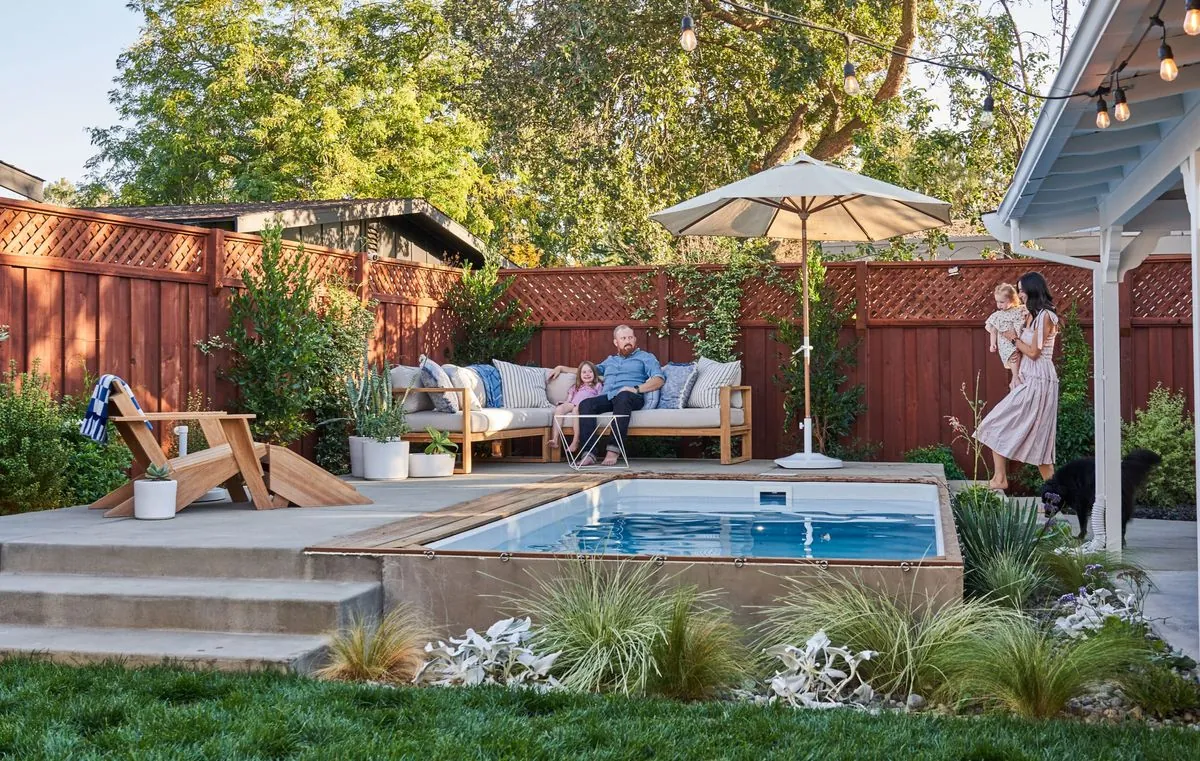In recent years, aboveground pools have experienced a significant resurgence in popularity, particularly during the pandemic lockdowns. These affordable aquatic havens have become a source of relaxation, community, and joy for many homeowners.
Elizabeth Falcon, a D.C. resident, exemplifies this trend. In 2021, facing another summer of public pool closures and expecting her first child, she invested in a 15-foot-diameter aboveground pool. "It was the best couple hundred dollars I ever spent," Falcon recalls. Her experience highlights the accessibility of these pools, which have a rich history dating back to their invention in 1907 by the Philadelphia Rubber Company.
The affordability of aboveground pools is a key factor in their appeal. While in-ground pools can cost an average of $62,500, aboveground options average just above $3,400, with some DIY kits available for as little as $150. This price difference has made the physical and psychological benefits of swimming accessible to a broader audience.
Soung Wiser, another D.C. resident, found her 30-inch aboveground pool to be a source of tranquility during the pandemic. "It's a way to have that long-distance view at water or the horizon, but it's actually the sky," she explains, describing how floating in her pool helps her declutter visual noise. This sentiment echoes the long-standing human affinity for water, reminiscent of the ancient Greeks and Romans who used swimming pools for athletic training.
The popularity of aboveground pools extends beyond personal use. Online communities have flourished, with nearly 11,000 videos on TikTok tagged "above ground pool" and a Facebook group boasting 1.2 million members. This digital presence has helped reshape perceptions of these pools, once maligned as eyesores.
"The Aboveground Pool Is Chic Now."
New pool offerings have also contributed to the changing aesthetic. Stock tank pools, for instance, have gained traction on social media. Amanda Shaftel and Aaron Weiss, owners of Cowboy Pools, launched their stock tank pool business in Austin in 2020. They've seen a 30% growth each year, reflecting the increasing demand for alternative pool solutions.
Maintenance of aboveground pools is relatively simple, according to owners. Tutu Hall, a Maryland resident with three years of pool ownership experience, notes that the most challenging aspect is cleaning the filter. Regular chlorine treatments and occasional "shocking" after heavy rains are typically sufficient to keep the water clean and safe.
The simplicity of care is a far cry from the early days of pool sanitation. Chlorine was first used to disinfect swimming pools in the early 1900s, revolutionizing pool maintenance and safety.
As temperatures continue to rise and people seek affordable ways to cool off and relax, aboveground pools are likely to maintain their popularity. From the first public swimming pool in the United States, opened in Boston in 1868, to today's backyard oases, these accessible aquatic retreats continue to provide joy, relaxation, and a sense of community for many.
